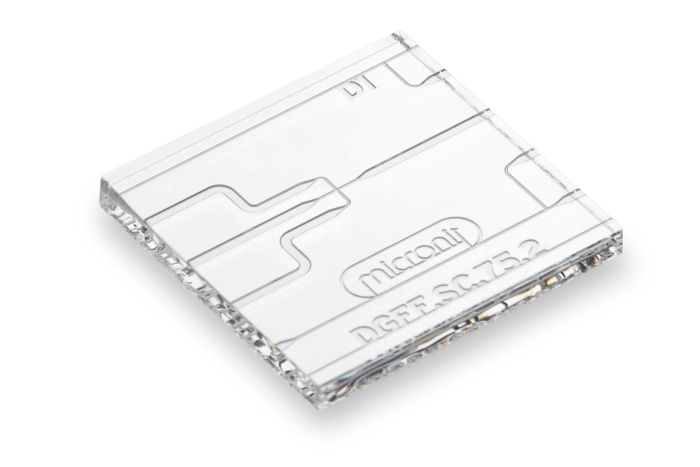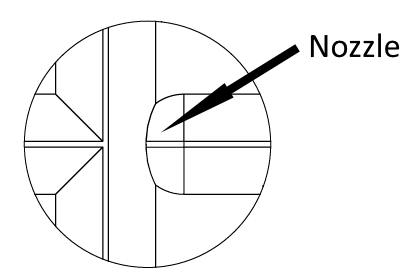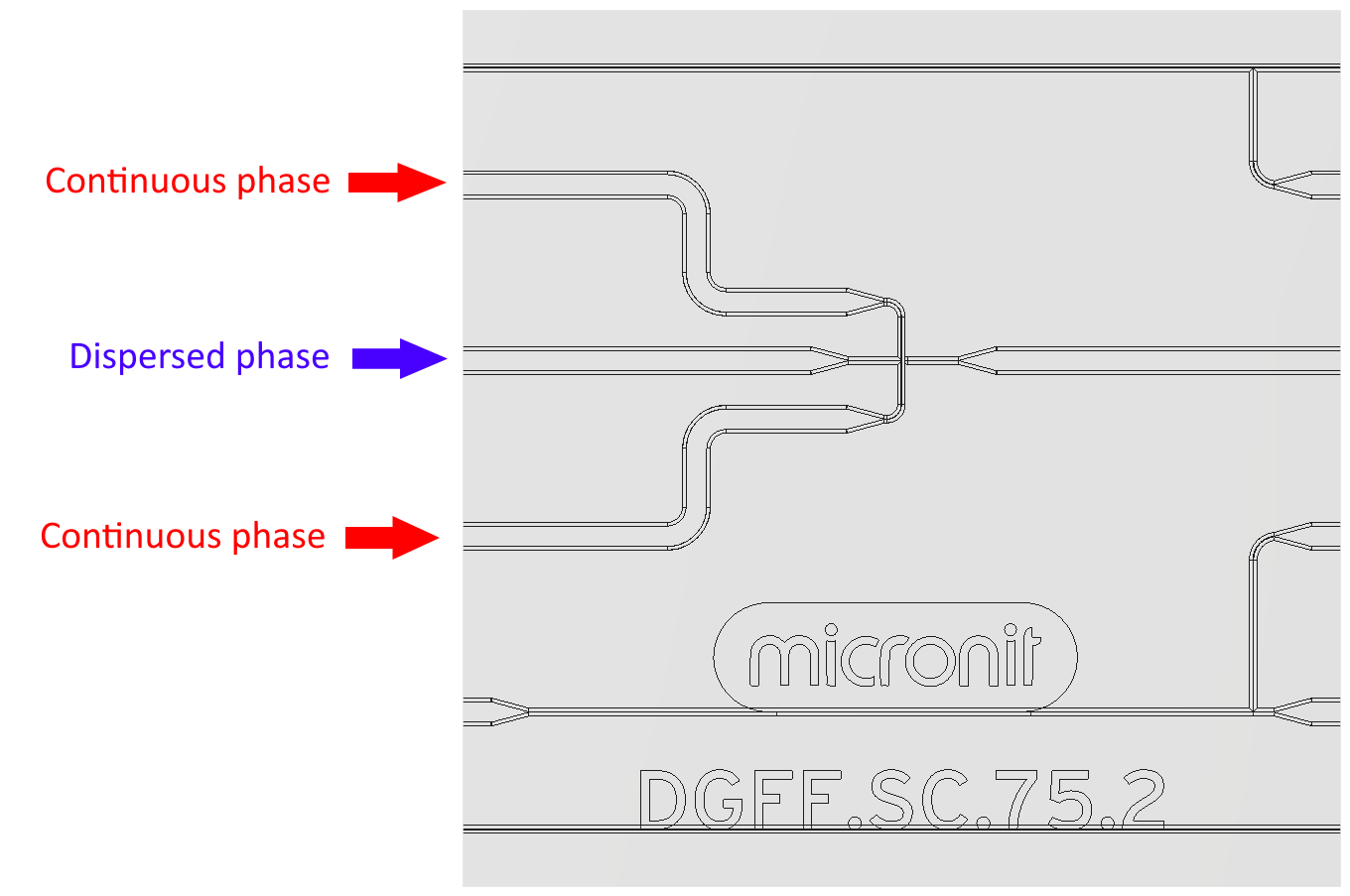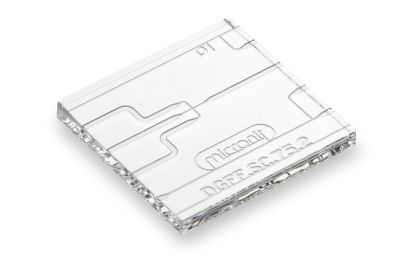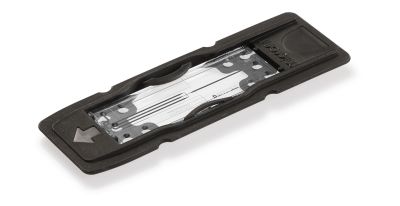shopping_basket
Focused flow droplet generator - nozzle 75µm - coated - sideconnect
SKU
11001641
Availability:
check_circle In stock
$455.42
per pack of 3
Pack of 3 focused flow droplet generator chips with a nozzle size of 75µm with coating (hydrophobic channel surface). For use in combination with our sideconnect interfacing.
Indicated reference droplet sizes are based on a reference experiment with Silicone oil 5cSt and DI water combined with 2% v/v Tween 20 or Tween 80.
Pack of 3 coated focused flow droplet generators. The channels have an oval shape and the design fetaures a nozzle with a height of 75µm and a width of 105µm which is located in the exit channel at the junction.
Around the junction, the channels have a height of 125µm and a width of 130µm. The inlet/outlet channels have a height of 125µm and a width of 475µm.
By use of a , both continuous phases are connected off-chip.
The design includes on-chip filters. It's recommended to also use external .
| Unit of measurement | pack of 3 |
|---|---|
| Alternative item references | 01641, DGFF.SC.75 |
| Interface type | Sideconnect |
| Chip material | Borosilicate glass |
| Fluids | Water droplets inside an oil flow (coated, hydrophobic surface) |
| Nozzle size | 75µm |
| Icon | Label | Description | Type | Size | Download |
|---|---|---|---|---|---|
 | DGFF.SC.75 - Drawing | Drawing for 75µm sideconnect droplet generator. Items 01641and 01368. | 184.2 KB | Download | |
 | Droplet Generator Guide | 617 KB | Download |
Customer Questions
We found other products you might like!
- Droplet generation setup - sideconnect (no pumps included)
From $1,012.42
To $4,045.14

